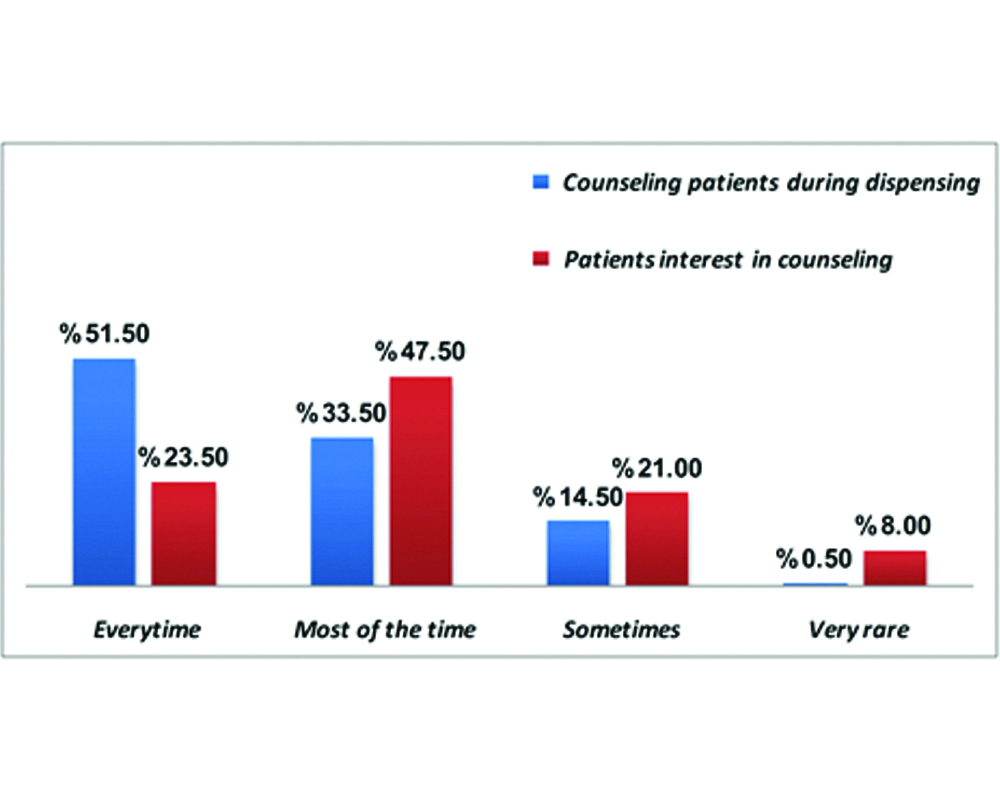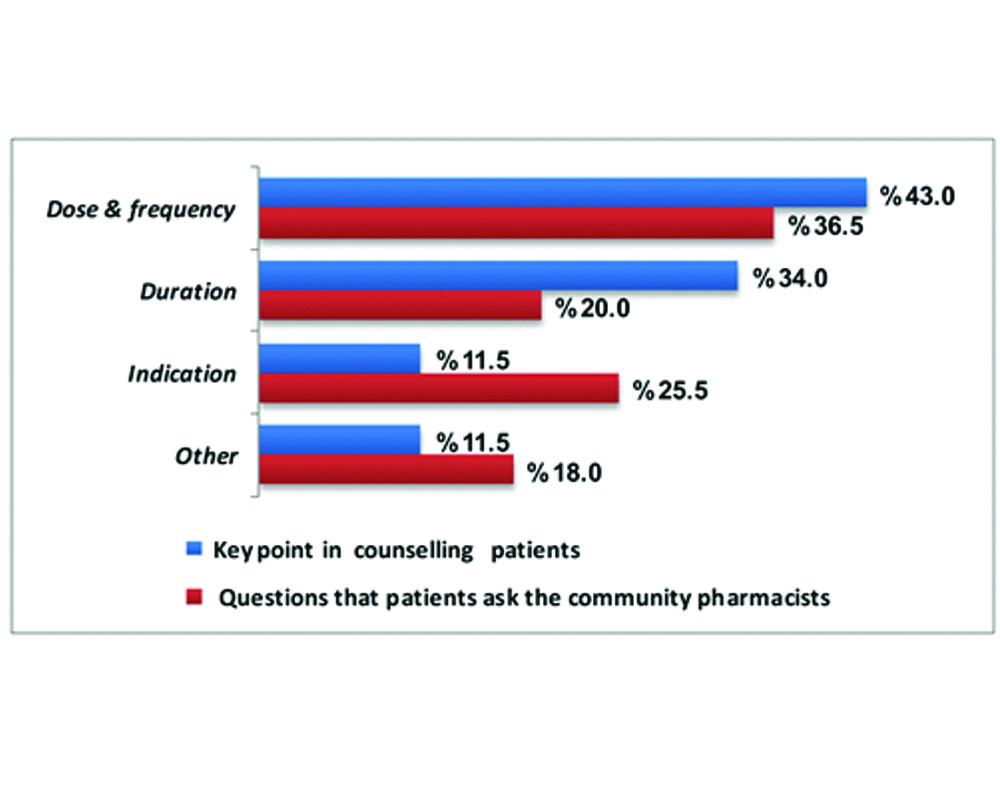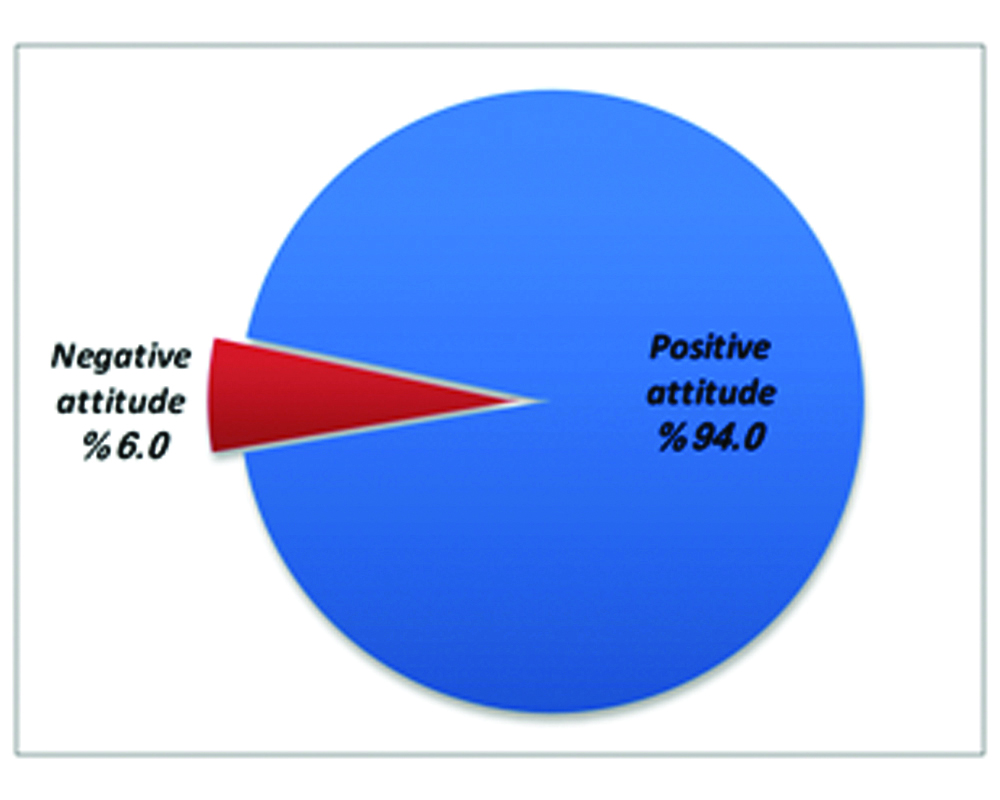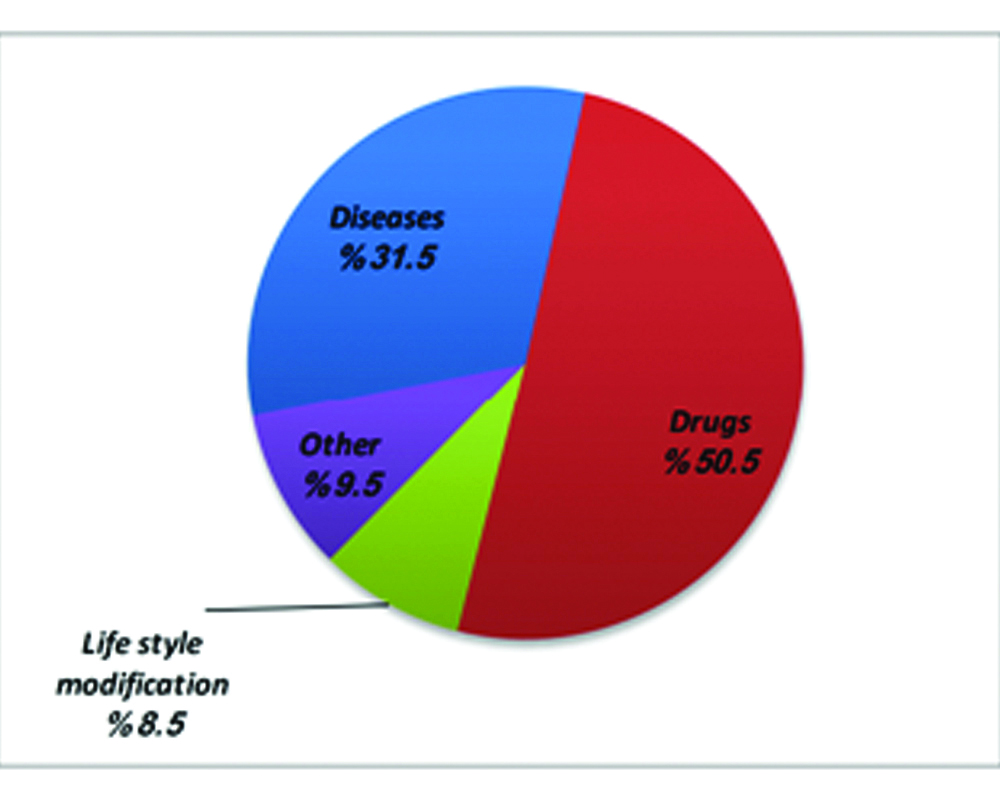Introduction
Patient counseling is a major component of pharmaceutical care, especially in community pharmacy settings. However, most community pharmacists still do not offer patient-oriented services. Despite the beneficial role of community pharmacists, research examining their roles and responsibilities in developing countries like Yemen is lacking.
Aim
To assess the community pharmacy personnel’s perceptions towards patient counseling and to recognise the major barriers to successful counseling; and to assess their perception towards continuing pharmacy education programs in Aden.
Materials and Methods
A descriptive, cross-divtional study was conducted among 200 community pharmacy personnel in Aden using a self-administered, structured questionnaire. Data were collected regarding community pharmacy personnel’s knowledge, attitude, and their perception about patients’ attitude concerning patient counseling and respondents’ attitude towards the continuing pharmacy education.
Results
The majority of the respondents had a positive attitude towards patient counseling (85%) and continuing pharmacy education (94.0%); dose and frequency (43.0%), duration (34.0%) and indication (11.5%) were the major information mentioned while counseling their patients. Lack of patient interest (47.0%), lack of knowledge (20.0%) and lack of time (15.5%) were the major barriers towards counseling.
Conclusion
The present study showed that most community pharmacy personnel in Aden, Yemen had a positive perception towards patient counseling and continuing pharmacy education program.
Introduction
Due to easy access and friendly approach, community pharmacies, are the first place patients visit to obtain consultation or treatment for their common ailments. It is a global trend that millions of people visit community pharmacies to meet their health care needs [1]. However, some general practitioners have been dismissive of the role of pharmacists and do not see them as part of the health care team [1]. Community pharmacists have a crucial role to play in terms of optimising medication use and improving patient outcomes. Patient counseling is one of the most vital services provided by them which can reduce medication misuse and further decrease the therapy costs [1,2]. Patient counseling is a major component of the pharmaceutical care processes, especially in community pharmacy settings. Pharmacists need to offer appropriate, comprehensible and relevant information to patients about their medications. Counseling not only improves patient compliance, but also reduces complications due to non-adherence to treatment [3].
Pharmacists are modifying a drug-focused approach to a patient-oriented approach according to the patient’s requirements, aiming at accomplishing better outcomes from drug therapies [4]. This imposes a close collaboration between pharmacists and other health care professionals, especially physicians, and necessitates knowledge and skills that go further than the product information about medicines [5].
In recent times, there has been a greater focus on the patient-oriented roles of community pharmacists in developed countries. The ultimate goal of patient-oriented counseling is to improve the therapeutic outcomes based on patient’s needs, improve patient compliance and reduce complications due to the poor or non-compliance to treatment [3].
In many Low- and Middle-Income Countries (LMICs), the role of pharmacy technicians are important especially in locations where there is lack of professional pharmacists or when the qualified pharmacists are not present. To carry out the patient-oriented roles, pharmacists and pharmacy technicians should have adequate qualification and professional training about the disease process, their management approaches and the complications stemming from irrational therapy. Pharmacists have acknowledged their professional responsibility toward patients. However, they have not been actively involved in patient counseling due to certain barriers such as patients not giving the essential information, pharmacist’s poor knowledge and lack of confidence, scarce continuous professional development programs, doctor’s dispensing medicines and no extra professional fee for counseling. Additionally, pharmacists give less priority to patient counseling [6].
In Yemen, most community pharmacists still do not offer patient-oriented services although they are vital and highly relevant. Despite the beneficial role of community pharmacists, research examining their roles and responsibilities in developing countries like Yemen is lacking. In this country, like many other developing nations, persons without academic qualifications in the field of pharmacy are allowed to operate a pharmacy and prescribe as well as dispense medicines. In addition, continuing professional education and development programs to upgrade their knowledge, skill and confidence are lacking.
It is important for pharmacists to regularly update their knowledge and skills in medicine management; Continuing Pharmacy Education (CPE) program plays an important role in supporting the development of pharmacists and advancing the overall practice of pharmacy [7]. In a multi-centre study carried out in Nepal by Poudel A et al., the significance of CPE programs to leverage the community pharmacist’s knowledge and to consolidate the concept of patient counseling was mentioned [8]. Policy makers, stakeholders, and researchers are among the relevant parties that should collaborate to develop interventions to improve the current dispensing practices at community pharmacies [9]. A positive perception, behavior and attitude is very important while seeking to implement pharmaceutical care. A study conducted in the Republic of Moldova, discovered that due to pharmacy accreditation, pharmacists have a better insight about their professional activities [10]. Rajiah K et al., and Sarriff A have confirmed that overall community pharmacists had positive perception towards patient counseling and CPE program [9,11].
Patient counseling by pharmacists can provide a new approach for promoting health and healthy life styles and additionally play an important role in educating people about safe and rational use of medications. The objectives of the study were to:
Assess the community pharmacy personnel perceptions towards patient counseling and to recognise the major barriers for successful counseling.
Assess the community pharmacy personnel perception towards CPE programs.
Materials and Methods
Study Design
A cross-sectional descriptive study was conducted from August 2016 to October 2016 among pharmacists and pharmacy technicians working in pharmacies all across Aden city, the port city of Yemen (with population around 800,000 people).
Study Population and Sampling
The sample size of 168 participants was estimated using Epi Info™ (version 7.2.0.1), with the assumption that the positive attitude toward patient counseling is 80% with absolute precision of 6% and 95% confidence interval. Also, 20% of the estimated sample size was added in order to counterbalance the non-response rate. The 201 community pharmacists were approached in a convenient way, due to the fact that it was difficult to have a sampling frame. Respondents excluded were those disagreeing to take part in the study. Two hundred participants completed the questionnaire giving a response rate of 99.5%.
Study Tool
A self-administered, structured, questionnaire served as the data collection instrument. Trained pharmacy students distributed the final questionnaire to community pharmacy personnel and gathered the responses from the respondents. There were 20 questions in the questionnaire [Appendix]. It was first written in English and then translated to the local language-Arabic. The Arabic version of the questionnaire was pretested by administering it to 20 community pharmacy personnel to identify any unclear or difficult questions and to ensure the appropriateness of the content. After minor changes, the questionnaire was finalised and distributed among the target group. The reliability of the questionnaire was tested by calculating the Cronbach alpha of the completed questionnaires. The alpha score was 0.71 and it was regarded as acceptable. The final version of the questionnaire encompasses questions on the socio-demographic characteristics of the study participants, their working situations, their knowledge, attitude, and their perception about patients’ attitude concerning patient counseling. The last five questions were scored on four-point (1-4) Likert scale with anchor words (‘Strongly agree’ to ‘Strongly disagree’) used to evaluate the respondents’ attitude toward the CPE.
Ethical Consideration
The study protocol was endorsed by the Ethics Research Committee of the Faculty of Medicine and Health Sciences, University of Aden. Written informed consent was obtained from all participants who were wiling to participate in the study after the objectives, importance and benefits of the research and voluntary participation were mentioned. They were assured that all the data gathered will be handled with full confidentiality, and it will be used only for research purposes.
Statistical Analysis
The data gathered from the respondents were entered and analysed using Statistical Package for Social Sciences (SPSS) (IBM Corp. Released 2011. IBM SPSS Statistics for Windows, Version 20.0. Armonk, NY: IBM Corp.). Categorical variables were elaborated using the frequency distribution and percentage. The overall attitude for each respondent toward the CPE on a four point Likert scale was assessed numerically. A median scores of <2 indicates an overall positive attitudes, while median scores ≥2 indicates an overall negative attitudes.
Results
Characteristics of the Study Population
Most respondents were males (82.5%, n=165/200) and the majority of them were between 25-35 years of age (70%, n=140/200). More than half of them (59.5%, n=119/200) had two to five years of experience [Table/Fig-1].
The demographic characteristics of the respondents (n=200).
| Characteristics | Number | % |
|---|
| Gender | Male | 165 | 82.5 |
| Female | 35 | 17.5 |
| Age group | <25 years | 47 | 23.5 |
| 25-35 years | 140 | 70.0 |
| 36-45 years | 13 | 6.5 |
| Experience | <2 years | 33 | 16.5 |
| 2-5 years | 119 | 59.5 |
| 6-10 years | 40 | 20.0 |
| >10 years | 8 | 4.0 |
| Qualification | Bachelor degree | 30 | 35.0 |
| Diploma | 170 | 85.0 |
Working Condition for the Community Pharmacy Personnel
[Table/Fig-2] reveals that nearly half of the respondents (48%, n=96/200) claimed that they were working between 8 to 10 hours daily. However, only few of them (2.5%, n=5/200) were working in pharmacies with more than five workers. Additionally, only around a quarter of them (25.5%, n=51/200) would spend more than five minutes on average for prescription dispensing.
Working condition for the community pharmacy personnel (n=200).
| Working condition | Number | % |
|---|
| Working hour/day |
| <8 h | 52 | 26.0 |
| 8-10 h | 96 | 48.0 |
| 11-16 h | 48 | 24.0 |
| >16 h | 4 | 2.0 |
| No. of pharmacists in the pharmacy |
| 1 | 21 | 10.5 |
| 2-3 | 145 | 72.5 |
| 4-5 | 29 | 14.5 |
| >5 | 5 | 2.5 |
| Pharmacy customer/day |
| <10 | 20 | 10.0 |
| 10–20 | 21 | 10.5 |
| 21–30 | 28 | 14.0 |
| >30 | 131 | 65.5 |
| Average time for dispensing a prescription |
| <1 min | 7 | 35.0 |
| 2-5 min | 142 | 71.0 |
| 6-10 min | 31 | 15.5 |
| >10 min | 20 | 10.0 |
Community Pharmacy Personnel’s Perception toward Patient Counseling
[Table/Fig-3] shows the majority of the respondents (85.0%, n=170/200) had a positive attitude toward patient counselling. More than half of them (51.5%, n=103/200) claimed that they counselled their patient every time while dispensing their prescriptions.
Community pharmacy personnel’s attitude and their perception of patients’ interest in counseling.

The respondents mentioned the dose and frequency (43.0%, n=86/200), duration (34.0%, n=68/200) and indication (11.5%, n=23/200) as the major points that patients ask community pharmacy personnel during counseling [Table/Fig-4].
Questions/areas asked by the patient for the pharmacist during counselling.

Barriers in Patient Counselling and Suggested Strategies by the Community Pharmacy Personnel to Overcome It
The majority of the respondents mentioned that lack of patient interest (47%) was the most important barrier in providing counseling to patients [Table/Fig-5]. Suggestions mentioned by respondents to overcome this barrier are listed in [Table/Fig-6].
Barriers in patient counseling (n=200).
| Factors | Number | % |
|---|
| Lack of time | 40 | 20.0 |
| Lack of knowledge | 31 | 15.5 |
| Lack of patient interest | 94 | 47 |
| Others | 35 | 17.5 |
Suggestions to improve patients’ attitude toward medication counselling.
| Factors | Number | % |
|---|
| Increasing no. of pharmacist | 39 | 19.5 |
| Attending CPE | 58 | 29 |
| Providing private space for counseling | 75 | 37.5 |
| Others | 28 | 14 |
Community Pharmacy Personnel’s’ Attitude toward CPE
Most respondents (94.0%, n=188/200) had a positive attitude toward CPE [Table/Fig-7a]. Out of 200, 94 of them (47.0%), showed a strong agreement, 96 of them (48.0%), agreed that CPEs enhances the knowledge, and updates their information. Further information about the community pharmacy personnel’ attitude toward CPEs is shown in [Table/Fig-7b]. In addition, the major areas of interest for the respondents were CPE with regard to drugs (50.5%, n=101/200) and diseases (31.5%, n=63/200). [Table/Fig-8].
#x2003; Community pharmacy personnel’s attitude toward continuing pharmacy education*.
*Attitude was assessed numerically by giving a score of 1 to strong agreement, a score of 2 to agreement, a score of 3 to disagreement, and a score of 4 to strong disagreement. Scores <2 were taken to indicate positive attitudes, while scores ≥2 were taken to indicate negative attitudes

Community pharmacy personnel’s attitude toward continuing pharmacy education.

Community pharmacy personnel’s areas of interest in continuing pharmacy education.

Discussion
Patient counseling is an important component of patient-centered care to ensure safe and rational use of medicines by the community. The study showed that most of the respondents had a positive perception towards patient counseling (87%) and CPE (94.0%), and the majority of the respondents had chosen ‘dose and frequency’ as the key points in patient counseling which is similar to the results by Sarriff A, according to which 93% agreed that counselling is important, and more than two-third felt that drug’s name, purpose including dose and frequency are important [11]. The reason being that there is lack of patient knowledge about drug administration since most patients usually asked about ‘dose and frequency’ during counseling [11]. We assume the reason for this finding might be the high prevalence of self-medication practice in Yemen [12]. Thus, patients approach community pharmacy bypassing the physicians. The finding is also supported by a study carried out in Nepal by Poudel A et al., in which queries regarding the ‘dose and frequency’ of medication was prevalent as the patients tend to be confused when more than one drug was prescribed [8]. However, queries related to the cost of medicines were most common in Nepal owing to the economic crisis [13].
Medication non-adherence or poor adherence is a global barrier towards ensuring safe and effective use of medicines. There are various factors that can contribute to medication non-adherence such as lack of communication between patient and healthcare provider, cultural beliefs and attitude, level of education, lack of privacy, lack of time and gender [14,15]. In Yemen, the problem of poor quality pharmacy services including poor patient counseling is due to lack of professionally qualified pharmacists in community settings, lack of policy and strict regulations about pharmacy operation, dissatisfaction with job, and overall situation of the country [16]. Additionally, lack of patient interest and time were other common barriers. These findings are consistent with the work done in other countries by Rajiah K et al., and Al-Hassan MI, regarding the main reasons for pharmacists not providing patient counseling [9,17]. Some solutions deemed best to overcome these barriers were providing CPE to address pharmacists’ lack of knowledge, and promote public education because education might alter the patients’ mindset and improve communication skills with the patients and thus address the barriers such as lack of patients’ interest. Moreover, another common solution that has been recommended is to increase the number of pharmacists to overcome the lack of time, which constitutes a major problem faced by most pharmacists.
Most pharmacists either strongly agreed or disagreed that CPE program could help improve their knowledge, provide current updates and information and strengthen their career. Moreover, most respondents (84.5%) were interested in attending CPE programs to upgrade their knowledge about pharmacy practice. The finding is supported by a similar study conducted in Nepal by Poudel A et al., [8]. CPE has been found to be effective in improving pharmacists’ knowledge and practice towards better pharmaceutical care services and patient outcome [18,19]. Nevertheless, community pharmacists’ interest in CPE was more focused on drugs, which may reflect the fact that they still perceive their major role as a drug dispenser.
Limitation
We have selected our target group by convenience sampling rather than random sampling. Another major limitation is the limited generalizability, as we carried this study among the community pharmacy personnel working in Aden city only. It is also worth noting that, some of the community pharmacy personnel selected refused to take part in the study and may differ from our respondents.
Conclusion
This study showed that most community pharmacy personnel in Aden, Yemen had a positive perception about patient counseling and CPE program. A greater number of qualified community pharmacists are required in Aden to reduce the barriers towards counseling, and CPE programs should be introduced for community pharmacy personnel. Pharmacists must create time to provide professional counseling, highlighting issues such as the use of medicines and related products, in order to improve the patient’s quality of life.
[1]. Mil F van, Measuring outcomes in pharmaceutical care Pharmaceutical Care Network Europe (PCNE) 1999 Zuidlaren:1-77. [Google Scholar]
[2]. Moira S, Towards a global definition of patient centred care BMJ 2001 322(7284):444-45.10.1136/bmj.322.7284.44411222407 [Google Scholar] [CrossRef] [PubMed]
[3]. Cipolle RJ, Strand LM, Morley PC, Pharmaceutical care practice 1998 New York, USMcGraw-Hill Companies Inc [Google Scholar]
[4]. Lindley C, Tully M, Paramsothy V, Tallis R, Inappropriate medication is a major cause of adverse drug reactions in elderly patients Age Ageing 1992 21(4):294-300.10.1093/ageing/21.4.2941514459 [Google Scholar] [CrossRef] [PubMed]
[5]. Pirmohamed M, James S, Meakin S, Green C, Scott AK, Walley TJ, Adverse drug reactions as cause of admission to hospital: prospective analysis of 18 820 patients BMJ 2004 329(7456):15-19.10.1136/bmj.329.7456.1515231615 [Google Scholar] [CrossRef] [PubMed]
[6]. Adepu R, Nagavi B, Attitudes and behaviors of practicing community pharmacists towards patient counselling Indian J Pharm Sci 2009 71(3):285-89.10.4103/0250-474X.5602920490295 [Google Scholar] [CrossRef] [PubMed]
[7]. Ibrahim OHM, Assessment of Egyptian pharmacists’ attitude, behaviors, and preferences related to continuing education Int J Clin Pharm 2012 34(2):358-63.10.1007/s11096-012-9616-422354853 [Google Scholar] [CrossRef] [PubMed]
[8]. Poudel A, Khanal S, Alam K, Palaian S, Towards patient counseling and continuing pharmacy education program: a multicentric study J Clin Diagn Res 2009 3(2):1408-14. [Google Scholar]
[9]. Rajiah K, Ting LC, Shan CS, Ming LY, Community pharmacists’ perception on patient counseling and continuing pharmacy education program in East Malaysia Malaysian J Public Heal Med 2016 16(1):15-22. [Google Scholar]
[10]. Accreditation council for pharmacy education (ACPE). Accreditation council for pharmacy education (ACPE) [Internet]. definition of Continuing Education for the Profession of Pharmacy. 2015. 1-5 Pp. Available from: https://www.acpe-accredit.org/pdf/DefinitionContinuingEducationProfession Pharmacy2015.pdf [Google Scholar]
[11]. Sarriff A, A survey of patient-orientated services in community pharmacy practice in Malaysia J Clin Pharm Ther 1994 19(1):57-60.10.1111/j.1365-2710.1994.tb00810.x8188792 [Google Scholar] [CrossRef] [PubMed]
[12]. Mojali S, Al-Ghanim S, Alduais AM, Al-Shabrani BF, Self-medication practice among Yemeni patients in Ibb city: a survey study exploring patients’ perceptives J Hosp Adm 2015 4(4)10.5430/jha.v4n4p32 [Google Scholar] [CrossRef]
[13]. Palaian S, Chhetri A, Prabhu M, Rajan S, Shankar P, Role of pharmacist in counseling diabetes patients Internet J Pharmacol 2004 4(4)10.5580/105 [Google Scholar] [CrossRef]
[14]. Albekairy AM, Pharmacists’ perceived barriers to patient counseling J Appl Pharm Sci [Internet] 2014 4(1):70-73.Available from: http://www.japsonline.com/admin/php/uploads/1161_pdf.pdf [Google Scholar]
[15]. Salkar M, Sah J, Pinto S, Vaidya V, Patient-related barriers to medication adherence in type 2 diabetic patients: a systematic review Value Heal 2016 19(3):A1810.1016/j.jval.2016.03.406 [Google Scholar] [CrossRef]
[16]. Al-worafi YM, Pharmacy practice and its challenges in Yemen Australas Med J 2014 7(1):17-23.10.4066/AMJ.2014.1890 [Google Scholar] [CrossRef]
[17]. Al-Hassan MI, Attitude of community pharmacists towards patient counseling in Saudi Arabia Internet J Pharmacol 2010 9(2)10.1310/hpj4804-338PMC3839450 [Google Scholar] [CrossRef] [PubMed]
[18]. Kennerly J, Weber RJ, Role of pharmacy education in growing the pharmacy practice model Hosp Pharmacy 2013 48(4):338-42. [Google Scholar]
[19]. Schindel TJ, Kehrer JP, Yuksel N, Hughes CA, University-based continuing education for pharmacists Am J Pharm Educ 2012 76(2):2010.5688/ajpe7622022438592 [Google Scholar] [CrossRef] [PubMed]